Port-Louis and the U-Boat Pens of Lorient
“Diwel Didrouz Maro Pa Denn”, Breton for “Invisible and Silent, I Carry Death”. Motto of the French Atlantic Submarine Squadron, based at Lorient from 1945 to 1995.
We’ve just gotten back from visiting the mind-boggling World War 2 U-boat pens at Lorient. While there we spotted a number of motorhomes parked among the complex of enormous concrete structures, and on park4night.com we can see freebie overnighting is allowed. Although it’s not the most salubrious of locations, that’s not the reason we’re not parked there. We weren’t even aware there were U-boat pens at Lorient when we arrived! I know, I know, we really should do more research…
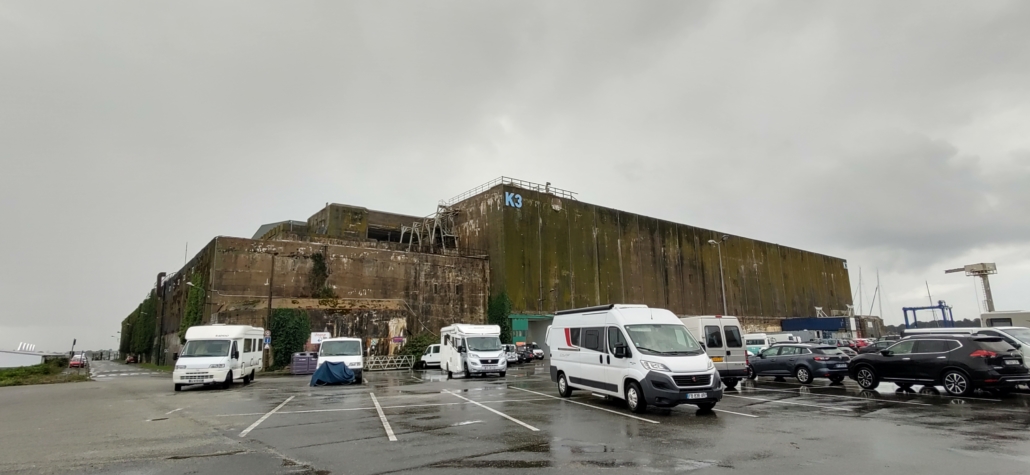
But hey, it’s worked out well enough. Instead we’re staying in one of the three aires at Port-Loius on the other side of the bay (N47.706138, W3.355783). We’re surrounded by the citadel’s 20-foot high stone walls, which are doing a magnificent job of shielding us from the half-gales which would otherwise have us rocking about like a stick on a spring. It’s one of the Pass-Etapes Camping-Car Park locations and at €12 a night with electricity it’s a great spot. It’s a campsite in summer, and the shower block closes in the autumn making it an aire (you need a self-contained van). If you’re in a van over 7m, you might want to pick the aire next door in the ramparts, it has easier access.
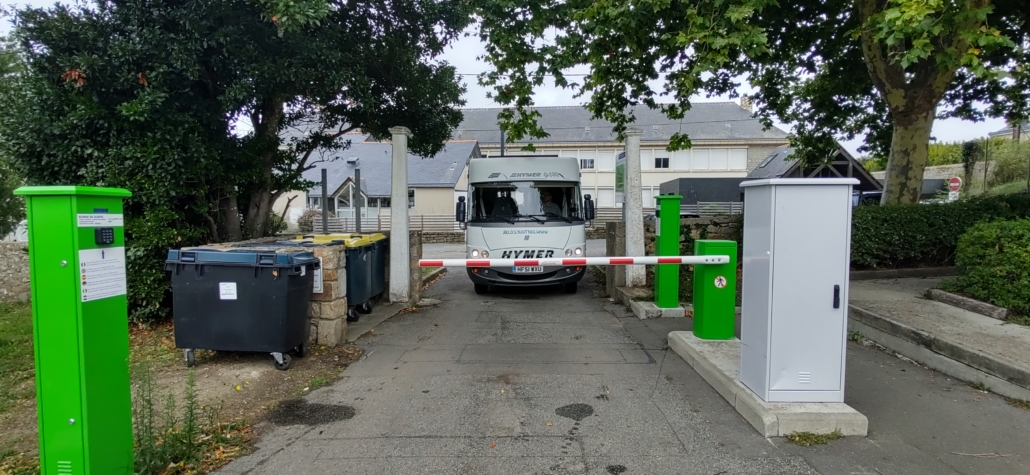
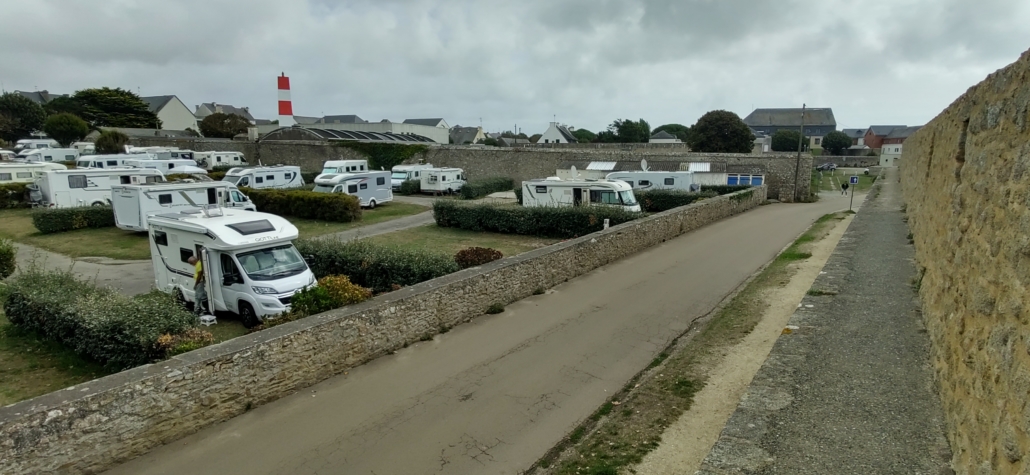
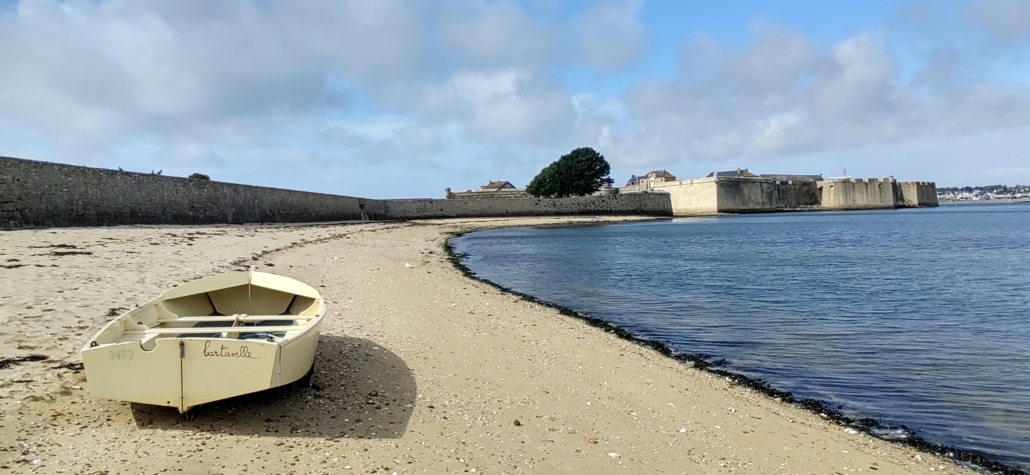
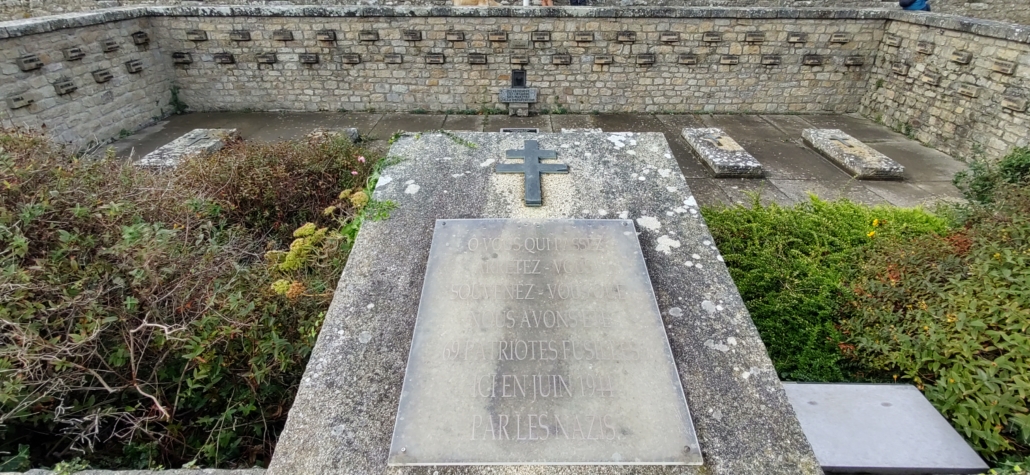
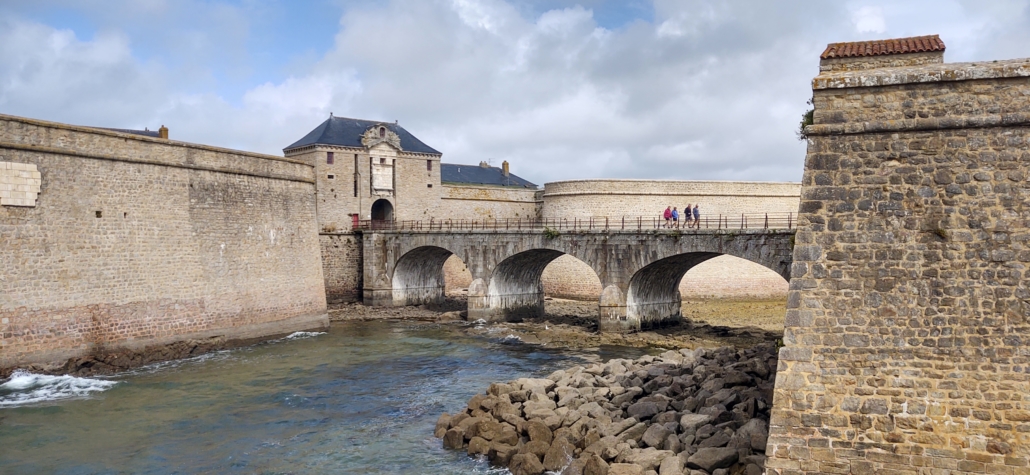
A short walk through the town brings you to a ferry which speeds 2km across the huge harbour mouth to the Lorient fishing port. From there it’s about a 1 mile walk through an industrial area to the U-boat pens (there may be a boat direct to La Base where the pens are, but we just hopped on the first one going to Lorient). Less convenient than driving to the pens, but more fun, and cheap too at €1.50 each. The boat granted us a cracking view of the sea-level pens.
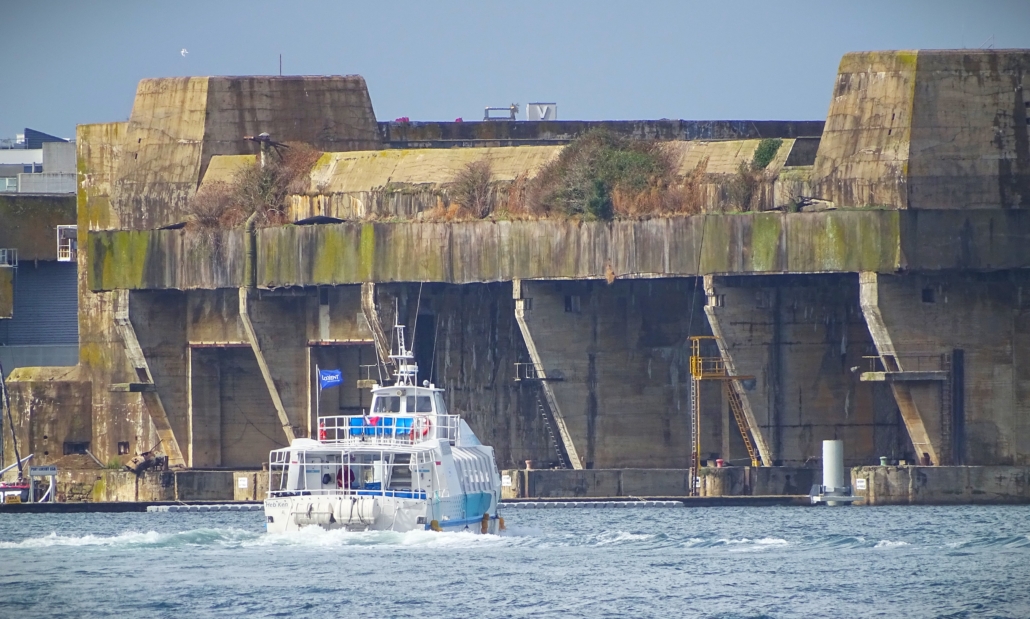
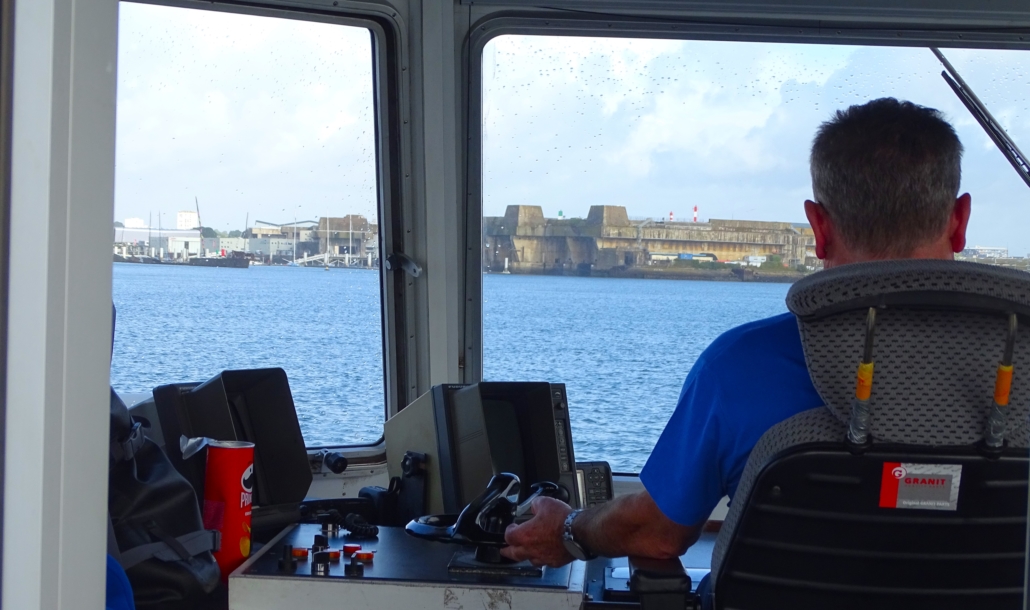
As the Allies fought their way across France and eventually into Germany in 1944 and 1945, the German defenders held onto a ‘pocket’ of Brittany including Lorient and its U-boat pens. They only surrendered here two days after the official surrender in 1945. As they moved in, the French navy found the U-boat facilities to be in good, useful condition and decided to operate their own subs from here, not leaving until 1995. After that the city decided to open it up for a combination of industrial use, as a marina for racing yachts and as a museum for the public.
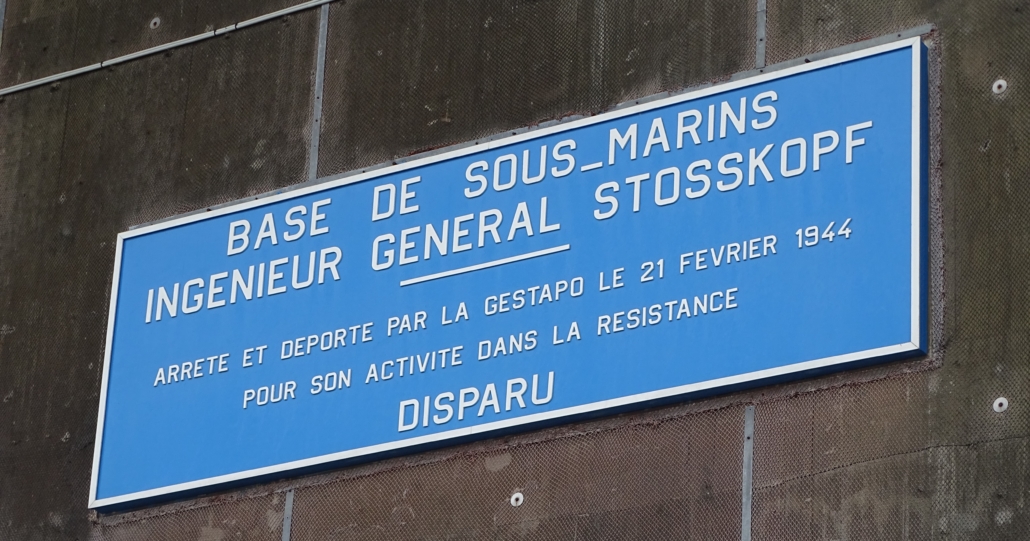
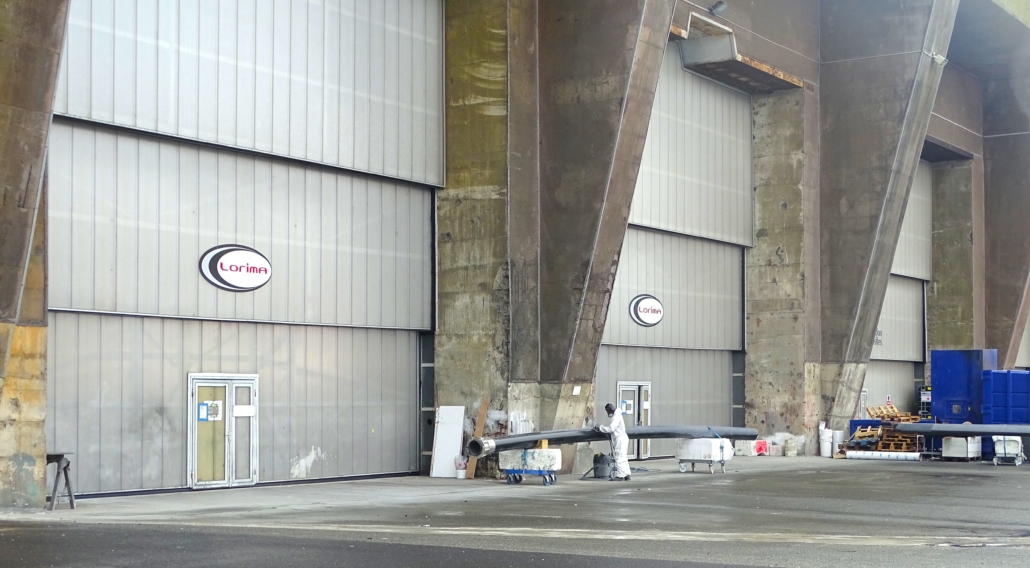
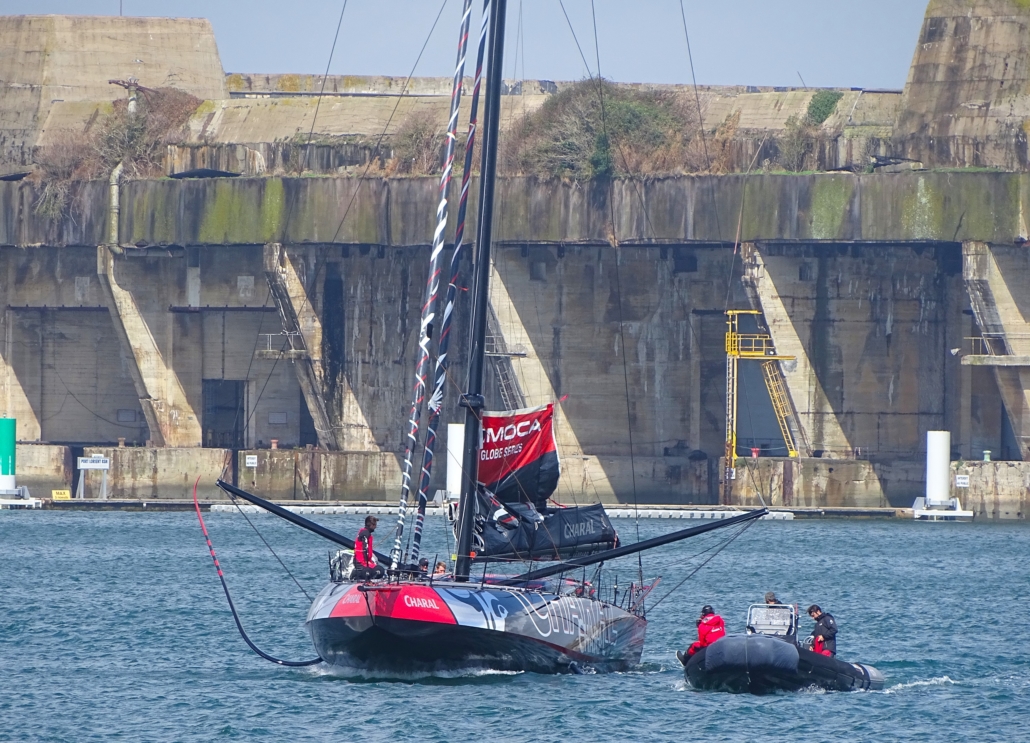
The pens, like those at Saint-Nazaire to the south, are famous. I really should have known they were here, but it’s always more exciting when you arrive without expectations to discover something dramatic.
I use the words ‘exciting’ and ‘dramatic’ with caution. I’ve had the fortunate to visit a few World War I and II ‘locations’ across Europe and North Africa. Fortifications, resistance bases, museums, concentration camps and places of massacre. They’re all historically interesting to me, but all carry a weight of sadness behind the drama and intrigue. A lot of men, women and children suffered as a result of their existence, it’s not something we forget.
For me, that motto at the start captures the essence of submarine warfare. Their job was to quietly and without warning destroy ships (and by extension their crews). It was all a giant attempt to deny Britain and later the Soviet Union resources mostly from North America. For six years the Battle of the Atlantic raged across an enormous theatre of naval warfare, and ultimately the submarines failed.
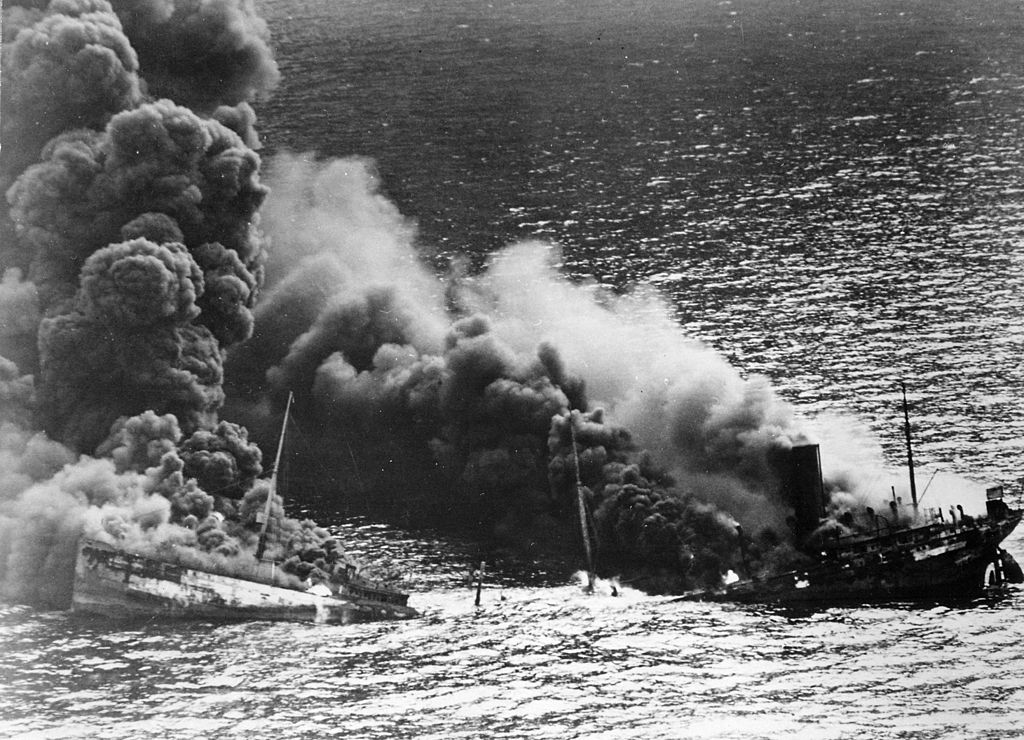
To sailors everywhere, the U-boats must have been a terrifying prospect. I can’t imagine the bravery needed to head out into the inky blackness of the Atlantic, with no idea what lay beneath hunting you. That said, as the war went on the odds shifted in favour of the convoys and out of the 1162 U-boats built, around half were sunk at sea. You’ve only got to watch Das Boot to get an idea of the boredom and terror involved for those lads inside the metal tube.
Right from the fall of France, Lorient was used as a base for German subs. Initially an inlet on the fishermen’s wharf was built, which allowed the U-boats to be lifted from the water and installed in one of twelve bays via a turntable. From here they could be repaired and refitted. Later a couple of wet docks were built, along with two Dom bunkers to offer some protection from air raids, so named as they resembled cathedrals. We spotted these as we walked the circular road around what would have been the turntable. They’re used by various businesses now, inaccessible as far as we could see.
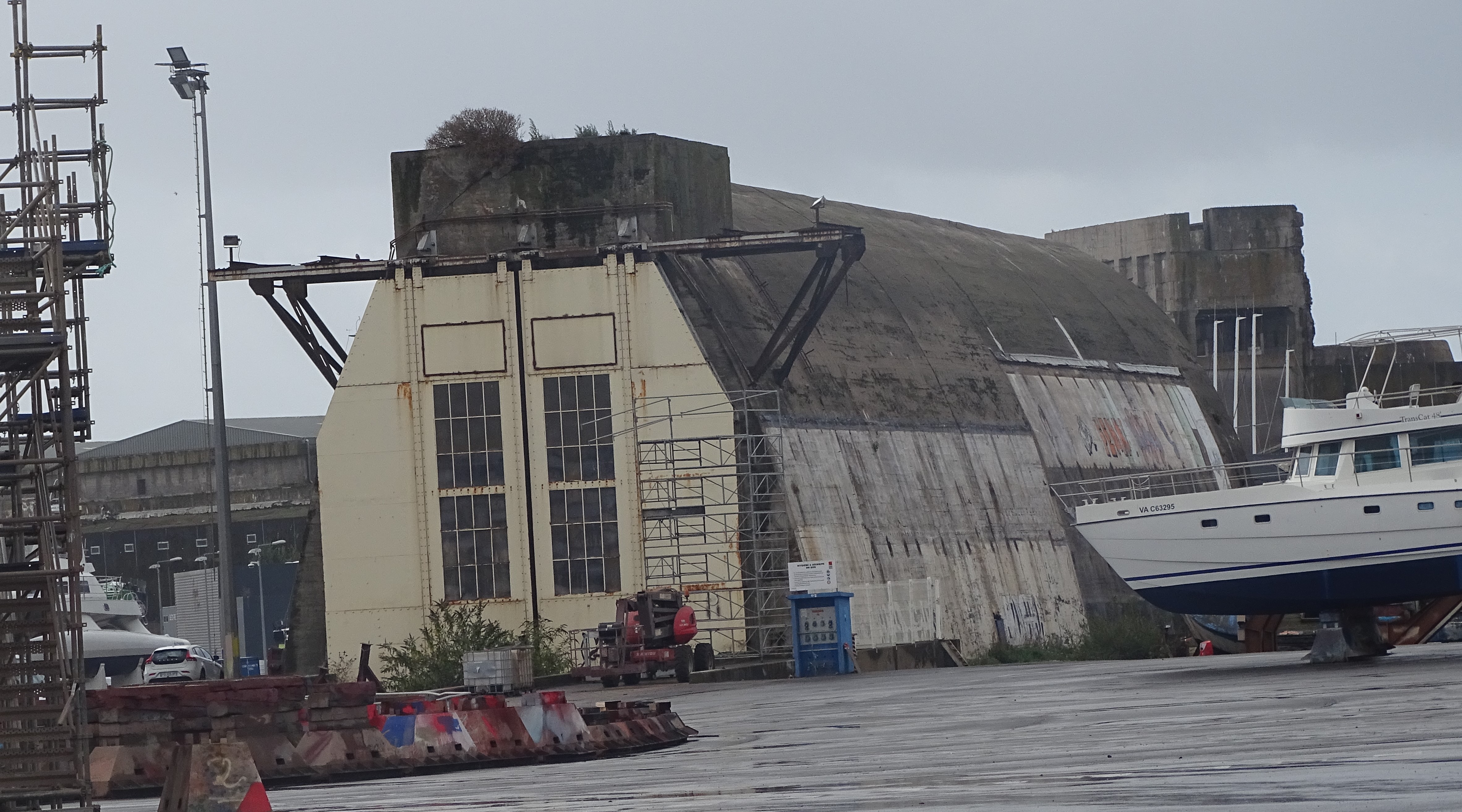
The soft ground and silting around this part of the port led the Germans to pick a rockier area to extend the base, the Keroman Peninsular. And boy did it need to be rocky, what they built there almost defies belief. A simply enormous amount of concrete and steel was poured into bomb-proof walls, ceilings, up to 10m thick in places. The blast doors, which are still there, frozen in places these days, are a couple of feet thick. They’re a fascinating but architecturally ugly sight from the sea.
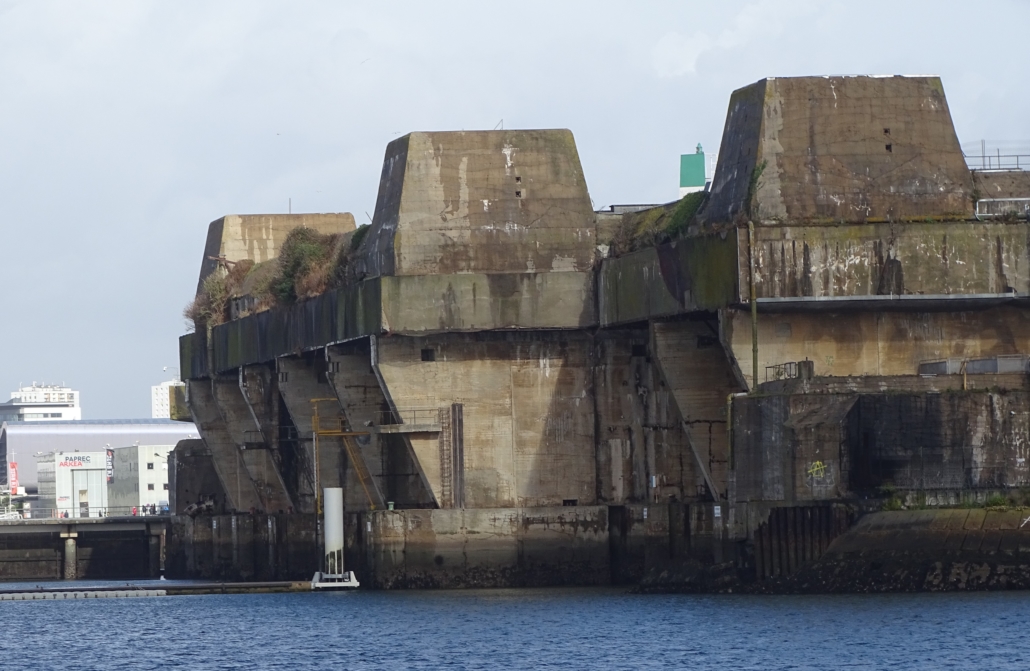
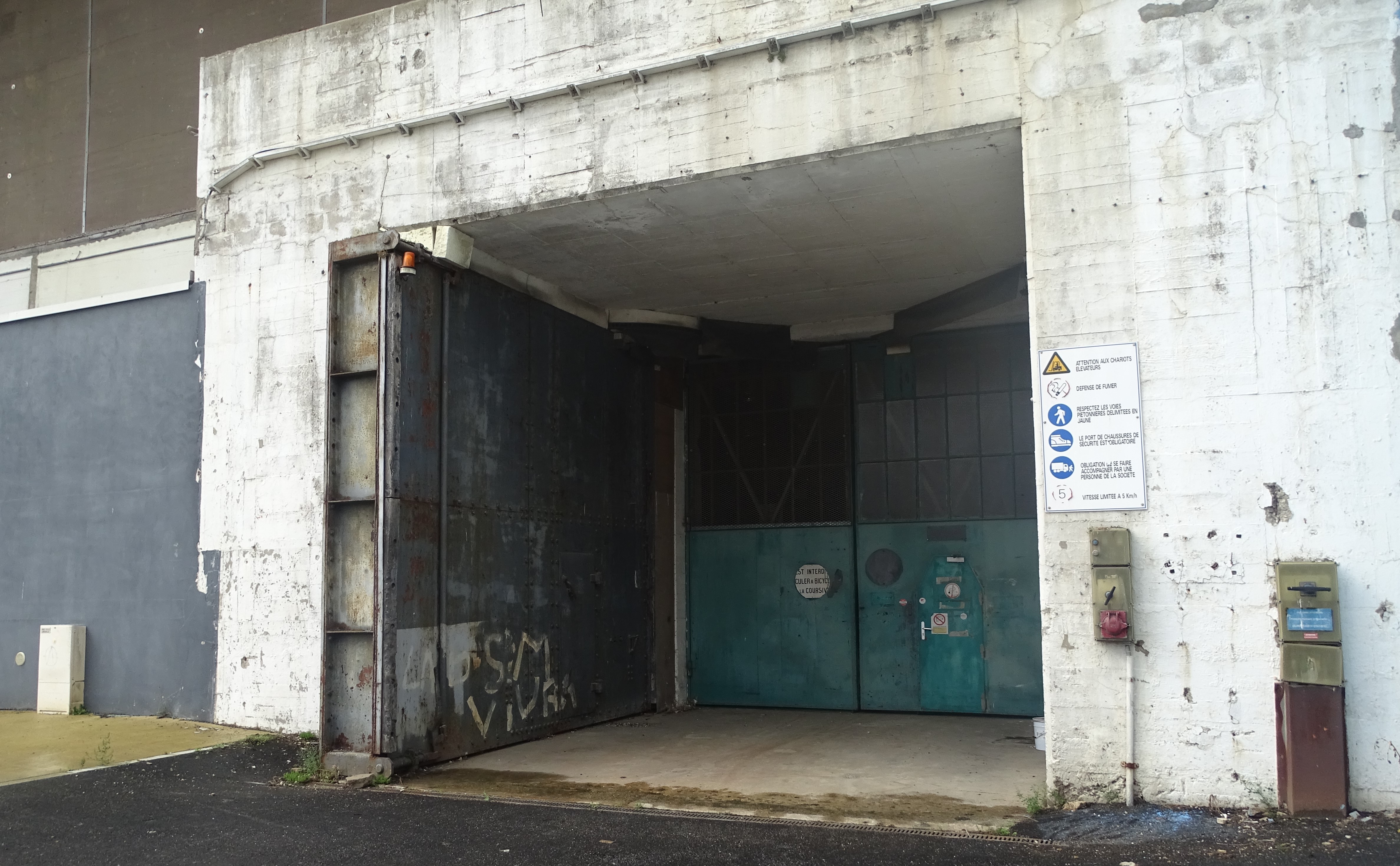
Close up, stood touching the walls where you can see the marks of the shuttering planks and rusting rebar, they’re staggering. The only thing I’ve seen quite as concrete-bonkers are the Wolf’s Lair in Poland and the Blockhaus d’Éperlecques, a V2 rocket construction site in the north of France. The Allies had a couple of bombs potentially capable of destroying such fortifications: earthquake bombs they called them, the whopping Tallboy and even more monstrous Grand Slam. To defend against these the Germans built double roofs, with a high gap between them.
An on-target earthquake bomb would blow an almighty hole in the top half (what a noise that must have been), but the second roof and the subs beneath would remain untouched. The German design must have worked, as the Allies decided the only way to successfully attack the pens was to blow up the entire city of Lorient. That way no supplies such as torpedoes could be brought to the subs. This they did, in a series of devastating fire-bombing raids in the winter of 1943, leveling an amazing 90% of the city.
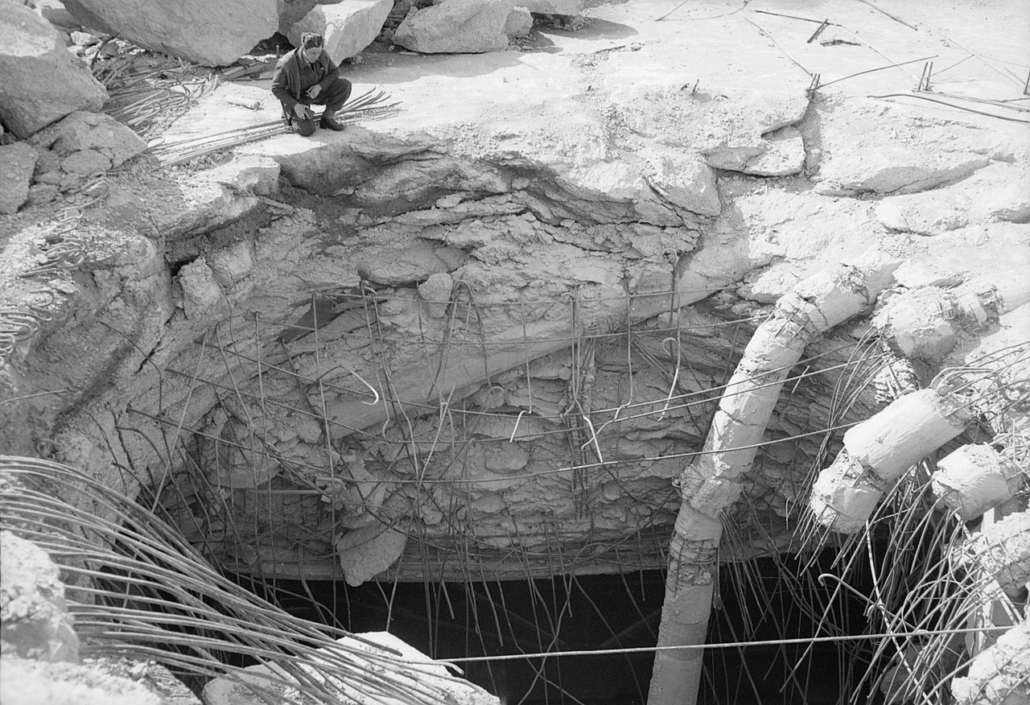
Both the Blockhaus and the sub pens were built by the German Todt Organisation. Here in Lorient they employed 15,000 workers. Half were French, employed by French companies, and the other half were from across occupied Europe and North Africa, housed in camps. They built three sets of protective submarine pens, named K1, K2 and K3. The first two required boats to be lifted from the water, carried to the relevant pen on rails and slid under the concrete casing ready for work.
The last one, K3, had pens at sea level, so boats could sail in and out quickly, although two of the pens were dry docks so could be used for longer repairs. A fourth building, K4, was started but never finished. It was due to hold a larger class of newer subs, but the need to build the Atlantic Wall drew away resources and all that stands now is a mega-wall of concrete.
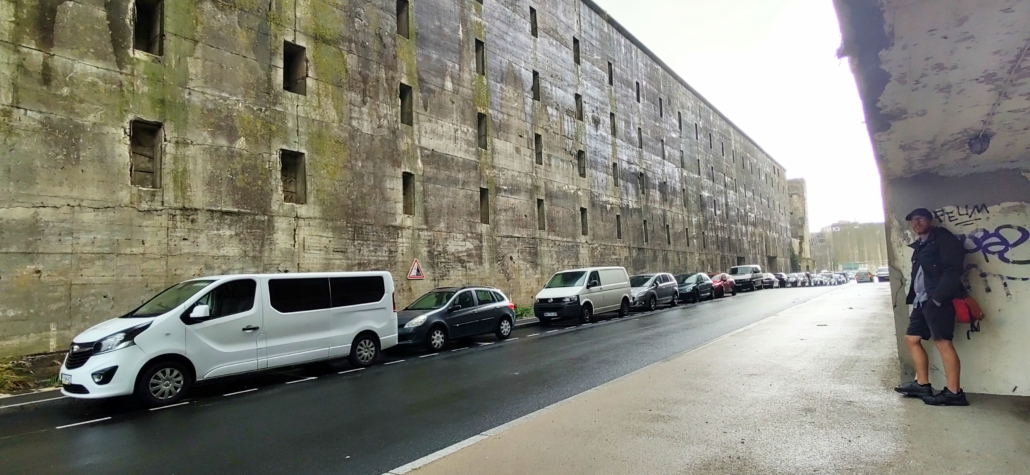
Before heading over on the ferry we’d done some research on how to visit the area (I know, shock, horror!). It wasn’t entirely obvious what was going on, but it turns out there are three museums you can visit:
- A guided tour of K3. These are run at set times and, as far as we can tell, are usually only in French. A few reviewers on Tripadvisor said they’d not found them helpful, as they couldn’t understand a word and the English-language tours were few and far between. We couldn’t see which tours were in English on the website and you were advised to book in advance as they sell out, so decided to wing it.
- A visit inside Flore, a decommissioned French sub, which sits atop the metal structure once used to move subs into the pens of K1 and K2.
- The Lorient Underwater Museum, a submarine rescue practice centre.
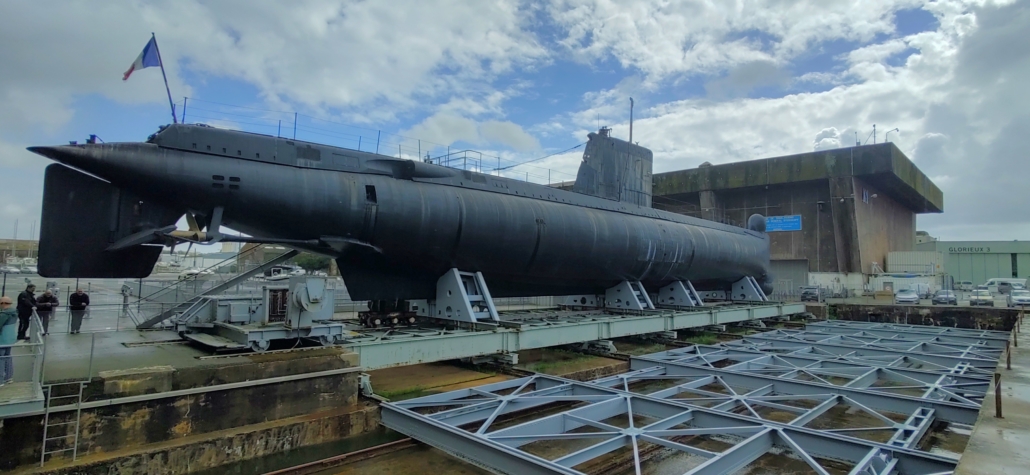
We opted to skip the museums. We’ve already visited the inside of a sub, in the Tonijn in the Netherlands and the K3 tours were full when we arrived (you can book in advance). Instead we opted to dodge the rain and just walk around the site. A good number of well-written, interesting French & English boards are scattered around a walking tour with photos and background info.
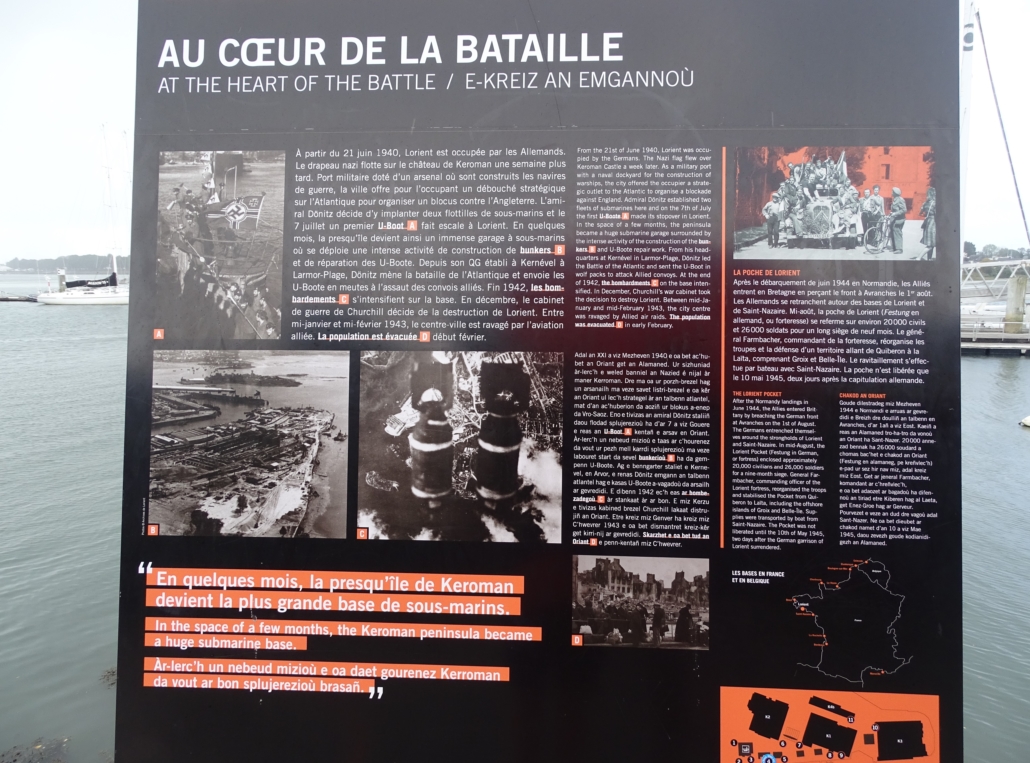
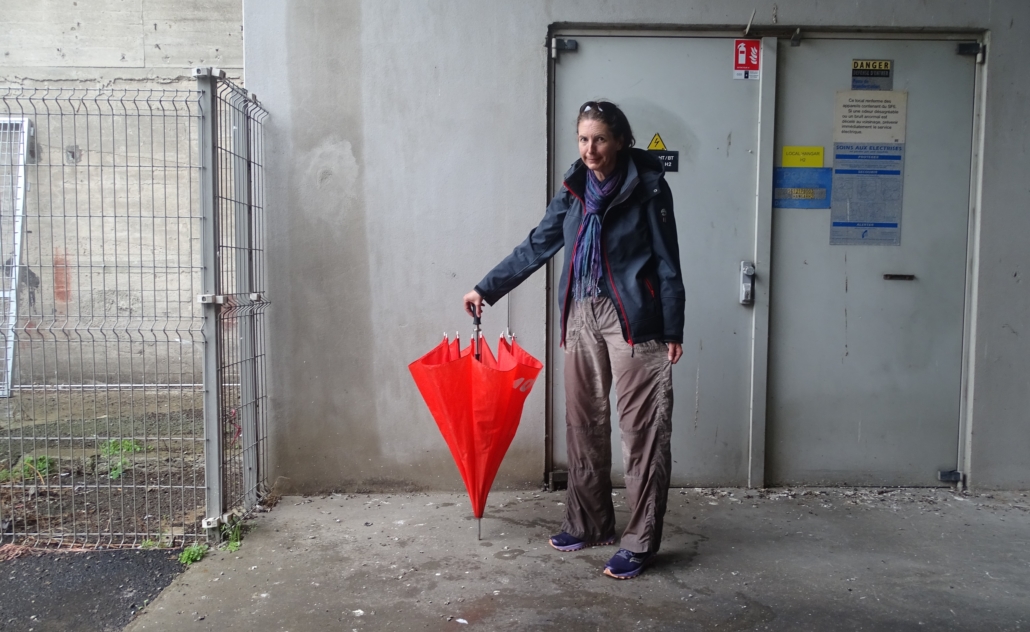
We also found we could walk down a jetty used for multi-hull racing yachts and look directly into the sub pens of K3 from sea level (well, no one stopped us). Quite an amazing viewpoint, I couldn’t help but think of villain lairs from the Bond films. Turning around we could see the deliberately scuttled ships protecting the entrance to the pens from torpedo attacks, one of which was used in the unsuccessful search for Roald Amundsen on his ill-fated last visit of the Arctic.
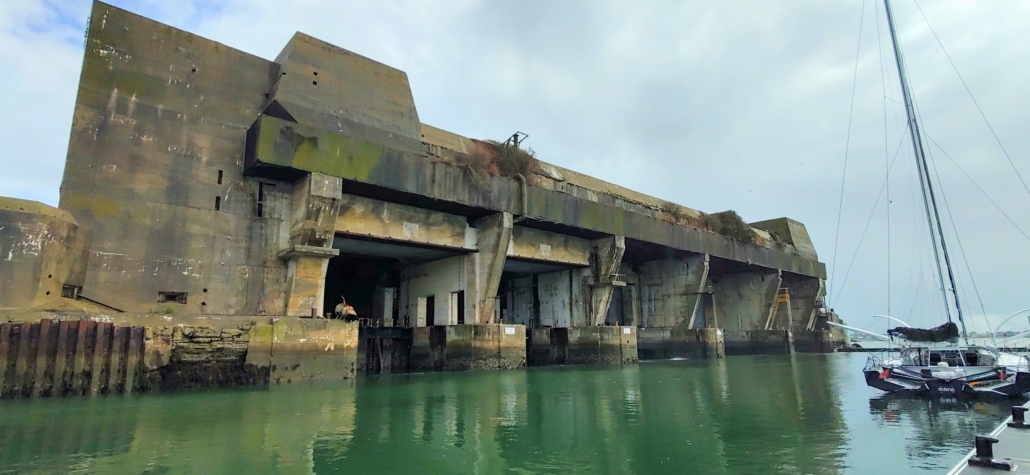
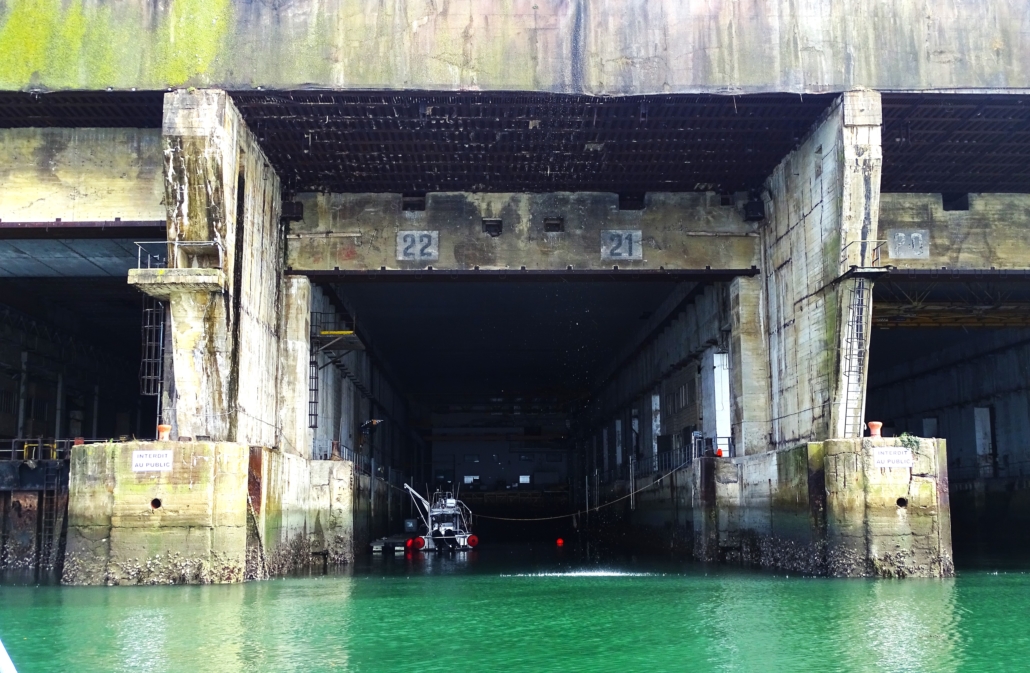
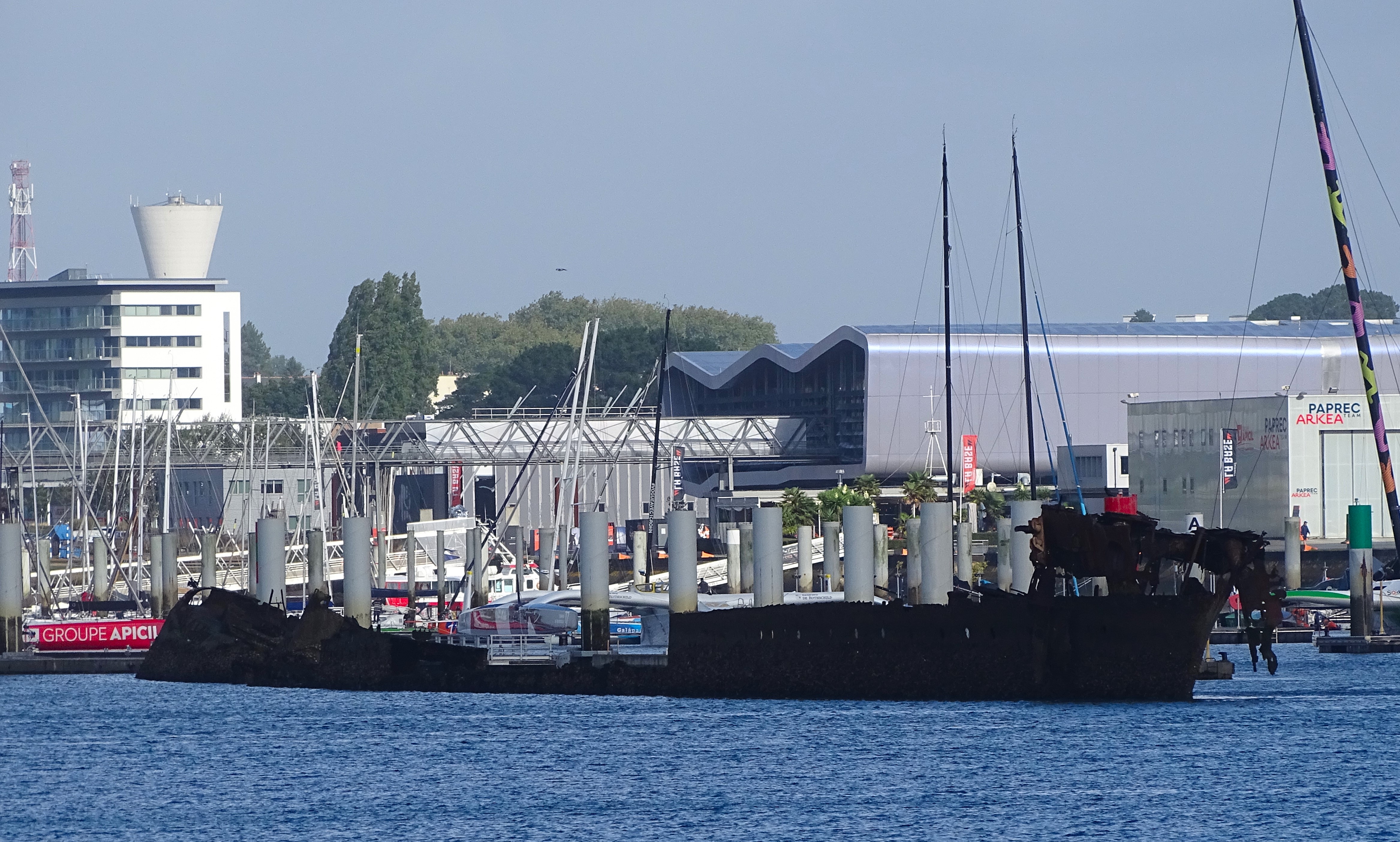
As we were staring into the depths of the K3 sub pens, we noticed a huge yacht coming to a halt in the harbour beside us and lower its sail. A few RIBs then seemed to sort of slowly nudge it backwards until it was finally moored alongside a pontoon opposite another bonkers-looking boat. Serious, cutting-edge bits of kit. Looking up the Banque Populaire XI afterwards, it’s the floating equivalent of a Forumla 1 car. It’s been built to break world records. The cost? To you, a mere 12 million of your finest French euros my friend, presumably more to research, develop, design and crew it. There’s more info here (in French) if you’re into fast yachts.
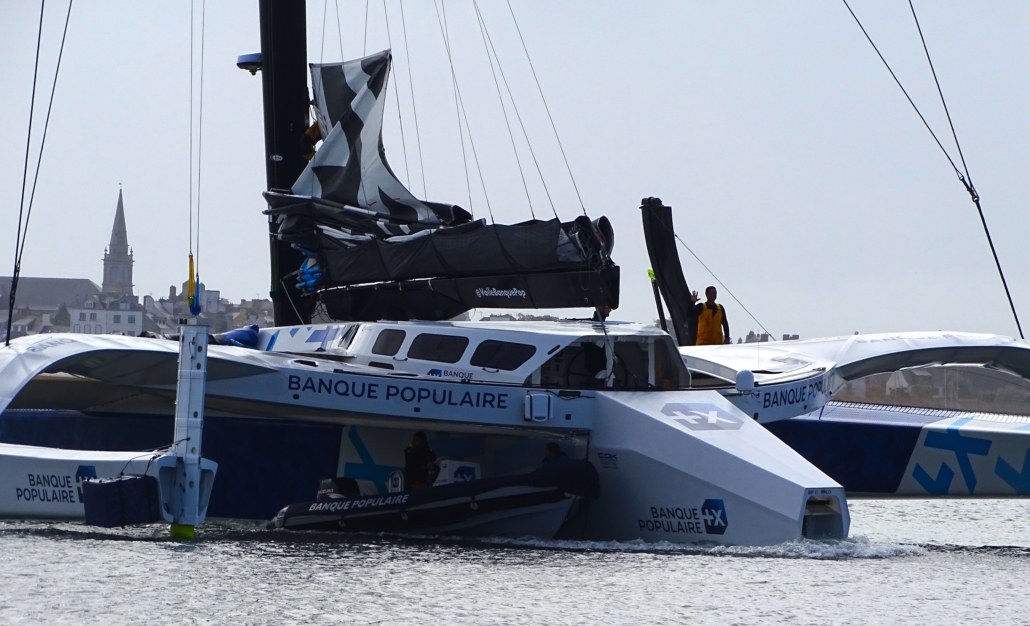
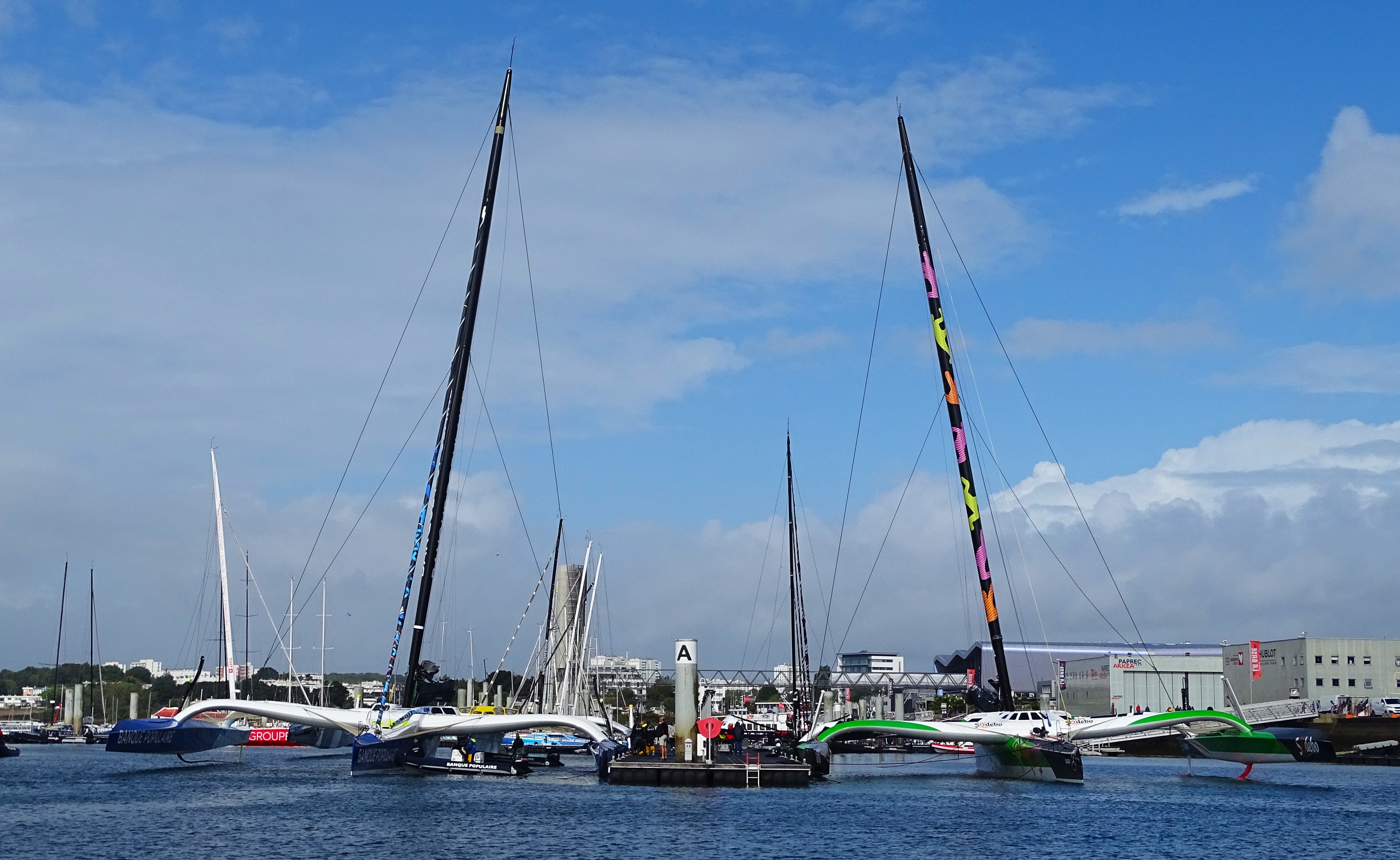
The weather seems to be digital around here at the moment. Blue sky and sun, or a sheer wall of water. Dodging the threat of another soaking we beat a retreat back to the boat and headed back to Port-Louis. Happy enough we were, having been treated to some pretty substantial, unusual sights.
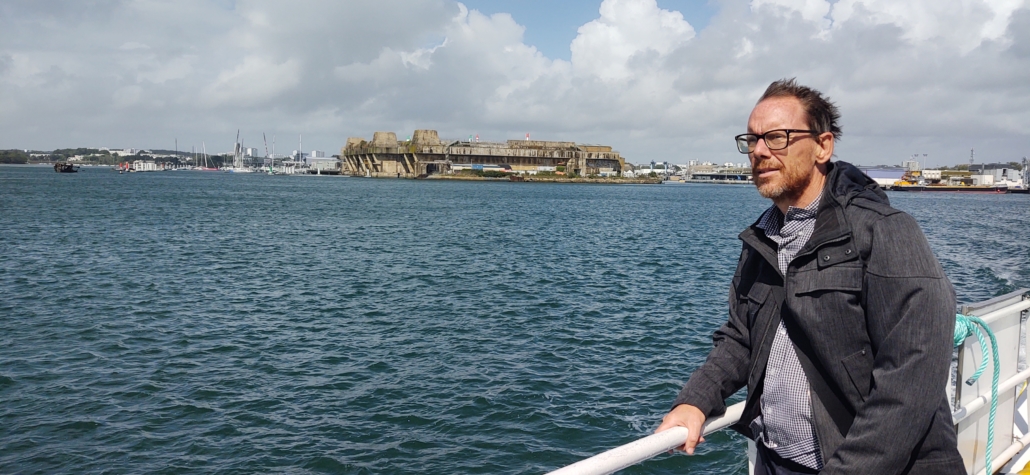
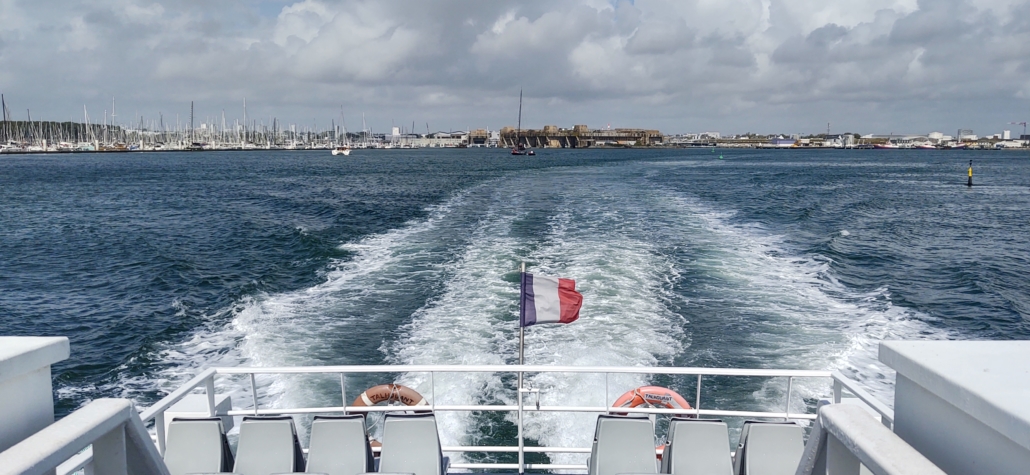
We’ve a week left in France before our ferry home, and will probably start the drive back towards Calais soon.
The news at the moment is suddenly full of worrying updates about Queen Elizabeth II. Everyone’s time comes of course, but I’ll be very sad when she passes. Sigh, before publishing this post news appeared the Queen has died. Rest in peace ma’am, you have our utmost respect.
Jay

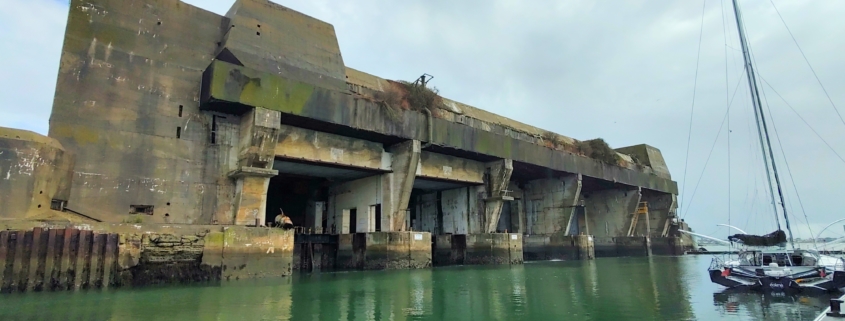


Hi Jay, I’ve never seen myself as an English grammar snob but I guess you have been reading too much American literature lately and slipped into their dreadful use of the word gotten. Now stop it or else :))
Joking apart, love the blog. Keep it up!
😂
It’s not just me then!! 😂
Truly interesting … dont know this area of France … ‘gotta’ go there now.